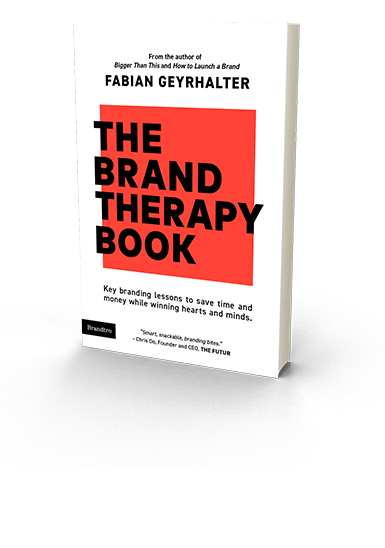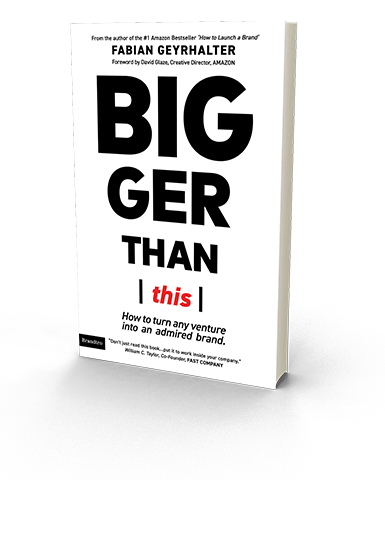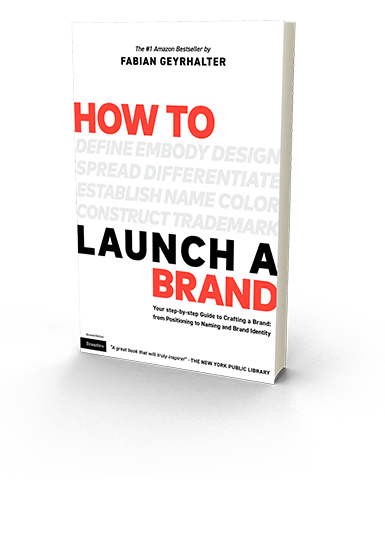Blog Archives
Startups: Stay Human
Yes, of course, all of the above is why we are all interested in startups, but the real reason why I dedicated the majority of my professional life to working with Founders comes down to something much more basic: Startups are human.

The beauty of purely human business interactions is lost in the vast majority of large companies I worked with over my career. I only get to feel them at the local Farmers Market and in the startup community. Not knowing is a virtue, learning a given, sharing a must. As startup Founders gain success, I urge you, do not lose the magic you possess, the magic you enjoy so much while being amongst yourselves, that magic of not only being human, but acting human.
CATEGORIES: Blog Startup Advice
Do You Embody Or Represent Your Brand?
You can establish/own/run your brand; you can represent your brand; or you can literally be and fully embody your brand.
If you create a brand that is solely based on yourself (obvious examples include a fashion brand, thought leadership brand, Etc), know that if you ever have the desire or need to re-brand and/or re-position, you will face many challenges. Sounds logical after the fact, but as you go down that path of associating your name with the brand, it is easy to let the ego, or the simplicity of finding the domain name, run the branding process and push you into the limelight for good (may that actually be for better or worse!).
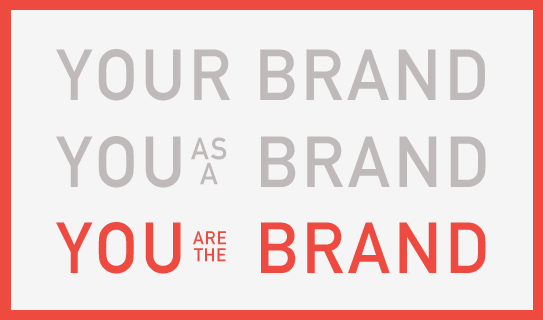
The issue of personal brand re-positioning will gain public attention during the US presidential election next year as we will be faced with two very different (and different types of) personal leadership legacy brands. Who is Hillary Clinton 2016 is what I pondered in The Washington Post (read this past Sunday’s cover story here) as we are collectively trying to re-define what her brand stands for today. Is the latest Bush brand in fact what the general public would assume it being based solely on his brand inheritance? I am not in politics (and smart enough not to discuss politics as part of my professional blog), but this comparison is the easiest way for you to watch the strategy, drama, and difficulty of personal brand re-positioning unfold on the big stage.
If you decide to be your brand, like a Martha Stewart did so famously before you, the coming months might make you re-consider and opt to solely represent your brand instead.
“Have You Eaten With Us Before? We Do Things A Little Differently Here.”
Really? Tapas-style? You don’t say!
Carrie Brownstein (of Sleater Kinney and Portlandia fame) responded to this all-too-common restaurant dilemma in a recent Rolling Stone article, “I always want to tell them, ‘I’ve eaten at a restaurant before. Unless I have to order in Esperanto, I think I’ll be able to get the hang of it…'”
Just like with restaurants hopping on the bandwagon a little late looking like fools, your venture will easily fall into the same trap, may it be through ‘our gamification aspect’, ‘our delightful experience’, the ‘unique social component’ etc. It’s still tapas to the rest of us, because we do not see how your product will make us feel differently.
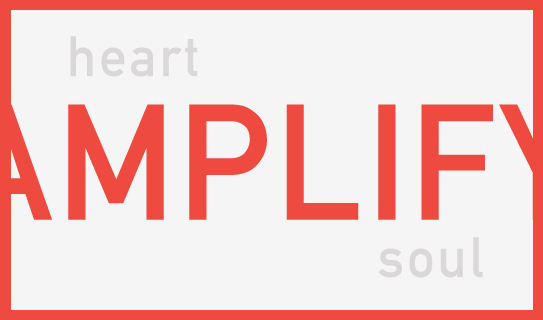
Ask yourself if you have found your true differently yet. To give you a head start, write a brand memorial speech. Once complete, it should make you feel the same way Carrie Brownstein felt when she heard the punk-rock style riot grrrl for the first time: ‘This is the sound my heart would make if I could amplify it.”
Listen to the heart of your startup, then amplify it so we can all hear it, and believe in it! And next time your waiter starts his differently speech, read him this post aloud.
Make Your New Brand Image Bland And Unmemorable
…was the advice I gave an entrepreneur last week. Wait, did I just really say this out loud? Yes, and here is why:
Like many entrepreneurs at the early (very early) stage, he was at a point where he needed to have a brand presence, just enough to get him through meetings looking legit. A business card in hand, a Powerpoint design to show and a web site to link back to. He was at a point where he needed to discuss his new venture in a professional manner with potential collaborators to further shape his concept. There was no outside investment and the core of the company strategy could sway depending on these initial meetings. It was not a time to invest in brand design, it would put the cart in front of the horse. So what to do?
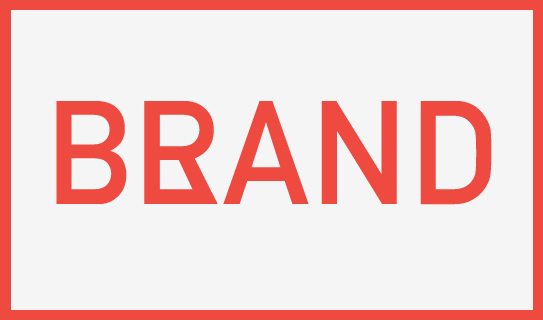
There was no way for him to create the brand design the right way, so instead of applying any kind of distinct design language (making it memorable), he thought to make it “meh.” Make it bland, make it colorless.
I sincerely agreed. In this very rare case you actually do not want your brand image to stick in your customers minds.
People should be educated about what you do and who you are, but you should not create a memorable brand design and language around a very early stage concept if you know it will all change, very soon. Once the startup strategy is formulated, the brand can be shaped.
So go out there and have them call your number rather than recall your brand image.
Just How Much Do They Love Your New Offering? Assume They Truly Loathe It.
Gaining early user feedback? Don’t assume they love it; assume they loathe it.
Like so many of us, I was looking for a better way to find mutually available times for meeting requests; an easier way to manage my calendar with third parties. I tested a plug in that promised to do just that, but as I was at the height of my frustration with the product (a few computer crashes later), I received a message from the startup checking in on me. I was delighted as I had tons of feedback to share. Here is how their message read:
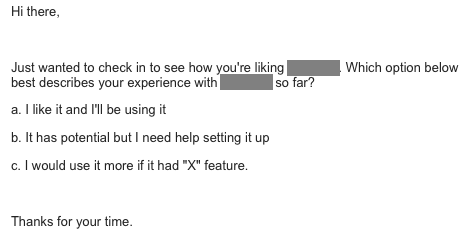
My first reaction: How pretentious!
I do not like it, do not feel it has potential (at my current state of frustration at least), and surely won’t be thinking about added features if the core was not working to my expectations. Where was my fourth option?
d. I do not like my experience with your product. (Please advise us as to why)
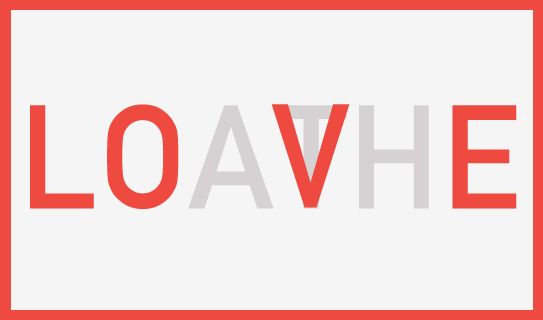
Don’t assume they love it. Assume they loathe it.
If you reach a frustrated user and you give them a chance to speak up about why they greatly dislike your product, you will:
a. learn and in consequence have a chance to better your offering
b. have a chance to keep the customer
c. potentially turn loathe into love
As for this plug in, I waved it good-bye upon receipt of that E-Mail. As for your next launch, I am just glad that you will share the love while inquiring about the hate.
“You Told Me My Company Name Sucks”
…was the subject line of an E-Mail I received a few days ago. Needless to say, I was intrigued to read on:
“I called my company “(Name Withheld)”, but you told me it was horrible. For that reason I wanted to reach out and say THANK YOU!”
He listened and he turned the page and now he is grateful for my frank advice just as much as for him listening and acting upon it. This is how I want to start off the New Brand Post for 2015 as it sums up what is key to branding a new venture, and what I want you to keep upfront and center this year.
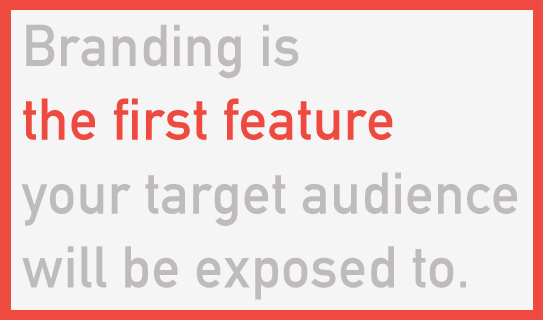
When you start a new venture, or initiate a new product offering, you tend to know best. You know your product best, you know your audience best, you know your marketplace best. You know your road map best. So, naturally, you are closing off quickly. Why? Because you know best.
Truth is, you just can’t be great at everything. I am not. No one is.
The moment you let go of that notion is the moment you open up to greatness. As a person, as a founder and as a brand.
Successful brands are built in collaboration with – and powered by insights from – specialists within their domain. The ones that are great at a certain thing, just like you are at your thing. It takes money and/or time, but for the ones who ‘get it,‘ like the one who wrote me above E-Mail, it will make for a better, if not great, brand.
This year be open, listen, absorb and analyze every step along the way as it relates to tasks like naming, brand identity, online presence, brand positioning, the same way you analyze, and more often than not over-analyze, each feature of your product or service offering. Branding is the first feature your target audience will be exposed to. It better click the right way, right away.
Define Your Audience Through Brains And Guts Versus Big Data
I had a fun time chatting at the Techweek panel two weeks ago about branding and marketing for startups (Amazing location, can’t beat that view). As panels go, it’s always a bit awkward and one can never predict the outcome. In my case, I was surprised that I could not stop talking about Topgolf. And I am not even a golfer. Here’s why:

Topgolf Promo Shot Via TopGolfUSA’s Twitter Channel
Topgolf is a chain of golf entertainment centers that cater to the very audience (Millennials, 18-34) that every other golf-related business is afraid of, because data, major news outlets (WSJ, Businessweek, Forbes) and Dick’s Sporting Goods’ golf layoff story has taught us that they just don’t care about golfing anymore. Topgolf created a cool environment that is about having a drink, a great time socially, and lastly about golfing. They flipped the things that made golf unattractive for Millennials and made them into a social media love fest, a place that demands you taking pictures and videos. You actually want to show off that you are golfing with friends. Pretty remarkable.
In the beginning though it seems like Topgolf (as most startups would have done) was driven by data, so they went after families and pros, based on a recent article in Inc. Data and ‘insights’ often turn into a safe zone for leaders to base their decisions on (like hiring IBM to feel job security in the old days – A.K.A. Fear, Uncertainty and Doubt), and it often leads to mediocre brand strategy and marketing results. I don’t believe it takes half as much data as it takes brains and guts to define your perfect target audience to market to.
If everyone says ‘don’t go there,’ perhaps they just did not take the right path.
Suggested Tweet: “I don’t believe it takes half as much data as it takes brains and guts to define your perfect target audience.” via @FINIENinsights
Branding Is What Happens To You While You’re Busy Making Other Plans
The expression life is what happens to you while you’re busy making other plans was penned in the 50’s. Most of us know the phrase thanks to John Lennon, who adopted it in the magnificent song ‘Beautiful Boy (Darling Boy)’ from 1980, hence making it his. He was the real Mad Men, wasn’t he? Copy, paste, claim, fame. OK, we all know that there was a lot more magic to his genius. Back to another genius who is crafting things: You.
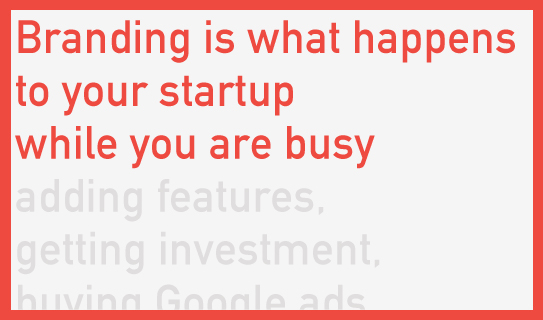
You, as a founder, are so busy doing and planning that you have lost touch with the genius, the beauty, the joy inside that very thing that you are so busy creating. Stop and smell the roses. I mean, really smell them, for once, or once again. You might realize you don’t even know what the beauty of it all is anymore, so you will have to step back to re-define what it means to you; now, today, not when you first had the idea and started the avalanche with a snowball.
Smelling the roses will re-birth your venture’s branding process. Define what kind of roses they are, the beauty of them with all their perfect imperfections (another great songwriter’s lyrics, but not John Legend’s words either), how they smell and how you had imagined them to smell. Without you being overly aware of it (or noticing it for the first time), how could you remind your teammates (who are busy building the brand while you are reading this) of the brand essence, the scent your potential customers are longing to smell?
Once you stopped and resurfaced and redefined, or simply reenergized that very reason behind the madness that is your venture, you will tell them. They are ready to hear it, they love hearing soulful words directly from the source. Tools create followers, you create believers.
P.S.: I will partake in a panel discussion at Techweek LA on November 20th. Come by or stream it live if you want to continue this conversation, or opt out and ‘be busy making other plans.’
Launch, Limited.
Swedish car maker Volvo sold all 1,927 First Edition XC90 models within 47 hours – online-only. Now you can get on the waiting list. Their mini site states:
Only 1,927 all-new XC90 First Edition cars will exist in the world, and each one will be individually numbered. More than a number, it’s your story. A moment in time marked on each First Edition. Made for you.
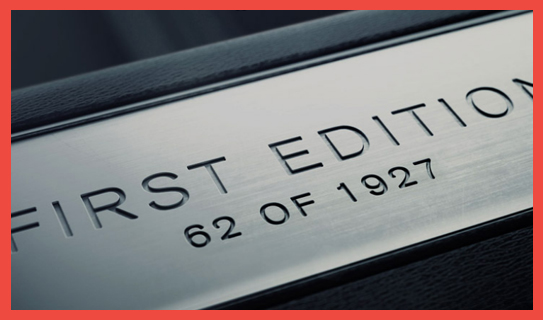
Taken from the Volvo XC90 Limited First Edition website
Limited sells.
Mankind has a fascination with exclusivity, it forms an immediate bond, one that is hard to establish through traditional marketing campaigns. As a startup you should think about ways in which you can promote your initial offering in an exclusive manner to make for that unlimited brand experience.
A powerful story and drool-worthy design will have to be at the foreground of your offering, word of mouth will stand tall behind it.
A limited splash, with expansive waves? It might just be the right strategy for your new venture.
The Secret Behind Big Brands And How Entrepreneurs Can Learn From It
This was one of many topics I was asked about by a croatian startup site prior to the speech I gave two nights ago at the University of Zagreb for the Founder Institute. The interview was published in croatian, which you can peruse here if you speak the language (and want to analyze and help me understand why the Backstreet Boys invaded my Brand Atmosphere), but for the rest of you, here it is:
Startups, especially the ones you will be talking to in Zagreb, are mainly in their early stages. Do they even need branding in that stage? If they do – what kind of branding do they need?
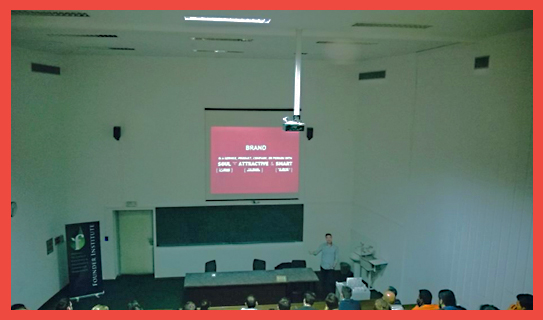
Fabian Geyrhalter speaking at the University of Zagreb for the Founder Institute, October 22, 2014

